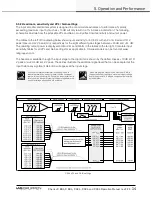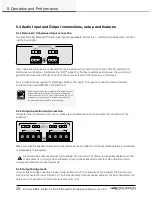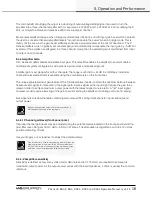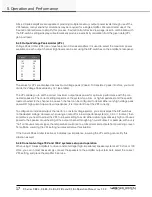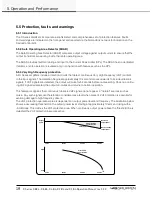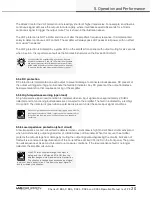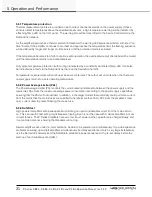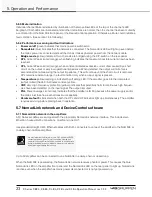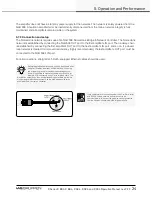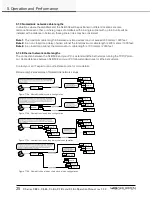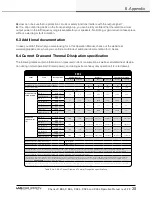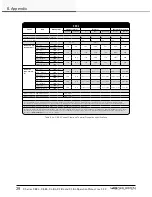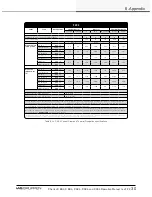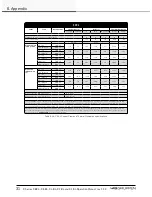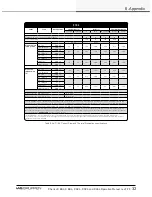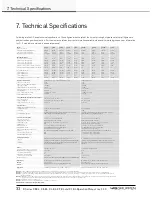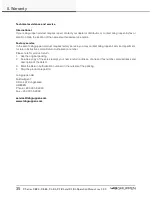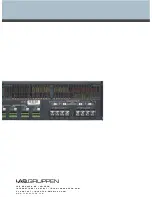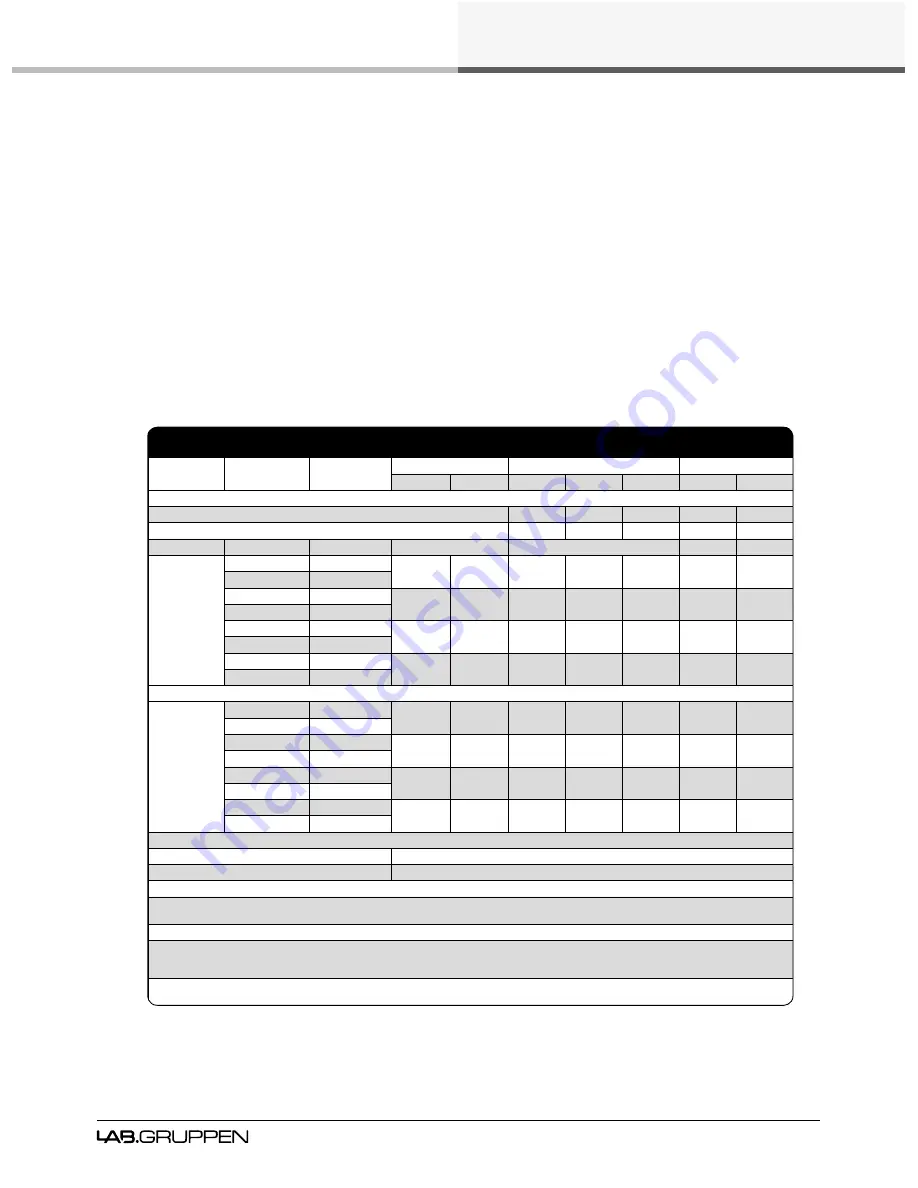
6. Appendix
28
C Series C 88:4, C 68:4, C 48:4, C 28:4 and C 16:4 Operation Manual rev 2.2.3
Q
: How can I be sure that no protection circuits or safety functions interfere with the output signal?
A
: If no Clip or Warning LEDs on the front-panel light up, you can be fully confident that the rated maximum
output power in the full frequency range is available for your speakers. No limiting or gain-reduction takes place
without a warning or fault indication.
6.3 Additional documentation
In case you didn’t find what you were looking for in this Operation Manual, check out the website at
www.labgruppen.com, where you can find a multitude of additional documentation for C Series.
6.4 Current Draw and Thermal Dissipation specification
The following tables contain information on measured current consumption as well as calculated heat dissipa-
tion during normal operation(1/8 rated power); and during extreme heavy duty operation (1/4 rated power).
C 88:4
Level
Load
Rated power
Line Current *2)
Watt *1)
Thermal Dissipation
115 VAC
230 VAC
In
Out
Dissipated
BTU/hr
kCal/hr
Standby with remote power off via NomadLink
0
0
0
0
0
Powered on, idling.
139
0
139
475
120
Amp (I)
Watt
Pink noise (1/8
rated power)
8 Ω / Ch.
1250 x 4
17.6
8.8
1177
625
552
1884
475
16 Ω / Bridged
2500 x 2
4 Ω / Ch.
2100 x 4
27
13.5
1914
1050
864
2949
743
8 Ω / Bridged
4200 x 2
2 Ω / Ch.
*4)
2200 x 4
33.6
16.8
2221
1150
1071
3655
921
4 Ω / Bridged
*4)
4400 x 2
100 V / Ch.
2000 x 4
26.2
13.1
1838
1000
838
2860
721
200 V / Bridged
N/R
Pink noise
(max power)
*3)
8 Ω / Ch.
1250 x 4
30.0
16.0
2006/2140
1145/1221
860/918
2935/3133
739/789
16 Ω / Bridged
2500 x 2
4 Ω / Ch.
2100 x 4
30.0
16.0
2127/2268
1230/1312
896/956
3058/3263
770/822
8 Ω / Bridged
4200 x 2
2 Ω / Ch.
2300 x 4
30.0
16.0
1983/2115
1016/1084
966/1031
3297/3519
831/886
4 Ω / Bridged
4600 x 2
100 V / Ch.
2000 x 4
30.0
16.0
5992/2236
3467/1294
883/942
3014/3216
759/810
200 V / Bridged
4000 x 2
Mains connector, 230 V CE version
16 A, CEE7
Mains connector, 115 V ETL version
30A Twist Lock
*1) The amplifi er’s PSU operates as a non-resistive load, so the calculation “Volts x Amps = Watts” would not be correct. Instead, measured and
specifi ed here is what is known as the “Active Power” in the amplifi er providing useful, real-world values of power consumption and heat dissipation.
*2) Current draw fi gures measured at 230 V. 115 V fi gures are 230 V fi gures multiplied by two.
*3) Figures measured at maximum sustainable power without tripping the mains fuse. Listed separately for 30 A/115 V and 16 A/230 V operation. Note
that the max. power condition is very extreme and will not occur during normal operation. Also note that the mains breaker will not be tripped even if
operation is
momentarily
in excess of max. ratings.
*4)
Italics used for conditions that, if sustained over long time periods, may trigger the mains breaker. Therefore these measurements should not be used
when calculating cooling requirements as they cannot be sustained by the mains breaker over time.
Table 8.4a: C 88:4 Current Draw and Thermal Dissipation specifications

